Women in Decision Making – Education
July 18, 2024Women in Decision Making – Marriage and Family Planning
July 19, 2024This article explores the state of women’s educational decision-making autonomy in Pakistan as reported in PSLM (2019), examining the roles and influences of various parties involved in shaping their employment choices.
1. Nationwide Analysis
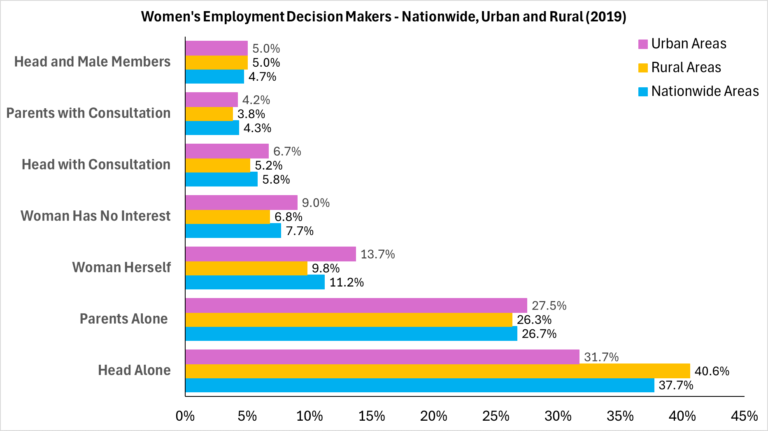
Source: PSLM 2018-19
Key insight 1:
Nationwide, only 11% women have autonomy in employment decisions, dominated by heads (37.7%) and parents (26.7%).
Author’s Analysis:
- These statistics reveal a staggering lack of agency and independence for Pakistani women. The low percentage of autonomous women underscores the pervasive gender inequality and patriarchal influences that govern women’s employment and career paths.
- A rural-urban divide is evident, with heads having more influence in rural areas (40.6%) compared to urban areas (31.7%). Conversely, parents have more sway in urban areas (27.5%) than rural areas (26.3%). This suggests that women in urban areas are more likely to have their parents involved in their employment decisions, while in rural areas, their heads (likely husbands or fathers) dominate decision making. This highlights a pervasive lack of agency among Pakistani women in their own career choices, with significant regional variations.
2. Provincial Analysis
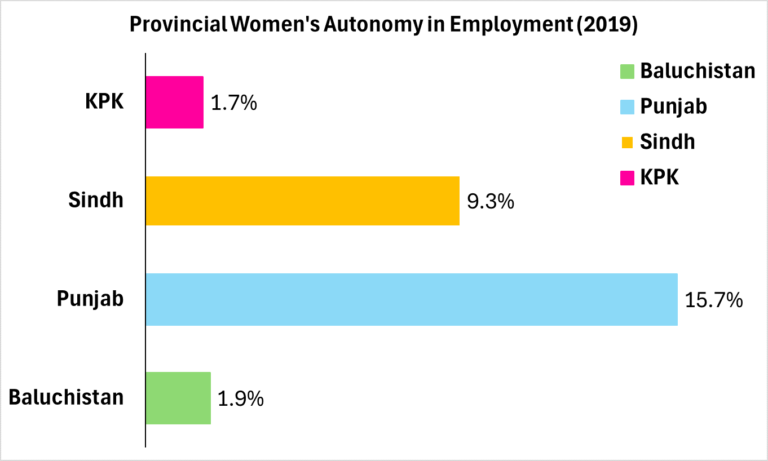
Source: PSLM 2018-19
Key Insight 2:
Punjab accounts for 15.7% women nationwide having autonomy in employment decision making, KPK has only 1.7%. Sindh and Baluchistan have the highest proportion of women not concerned with employment decisions.
Author’s analysis:
- Punjab stands out with 15.7% of women making their own employment decisions, while KPK lags with only 1.7%. Notably, Sindh and Baluchistan have the highest proportion of women not concerned with employment decisions. The data reveals a strong correlation between provincial culture and women’s agency, with Punjab showing more gender equality and Baluchistan and KPK exhibiting patriarchal norms.
3. Barriers of Women’s Autonomy in Employment Decision Making (Nationwide)
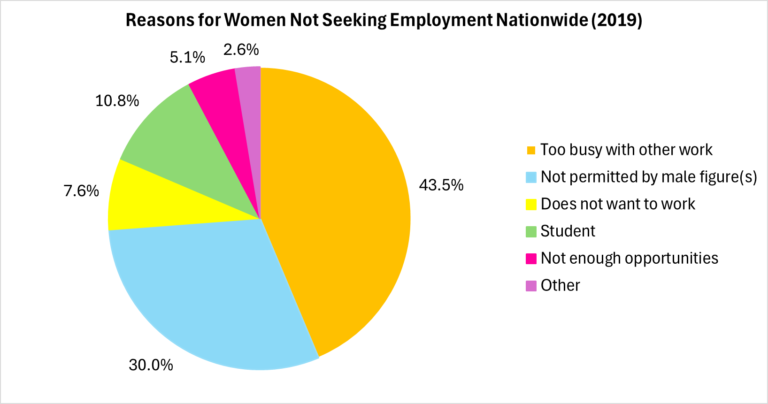
Source: PSLM 2018-19
Key Insight 3:
43.5% women sacrifice employment for domestic duties and 30% cite lack of permission from male figures.
Author’s analysis:
- Domestic work and family restrictions are the primary barriers, with 43.5% women sacrificing employment for domestic duties and between 33% to 24% women citing lack of permission from husbands or fathers. Interestingly, women in Baluchistan and Sindh prioritize and prefer domestic work, while Punjabi women are more likely to be students – insinuating the expectations they were brought up in. With women’s decision making power in employment decreasing from 2005 to 2019, targeted interventions are needed to address these specific barriers.
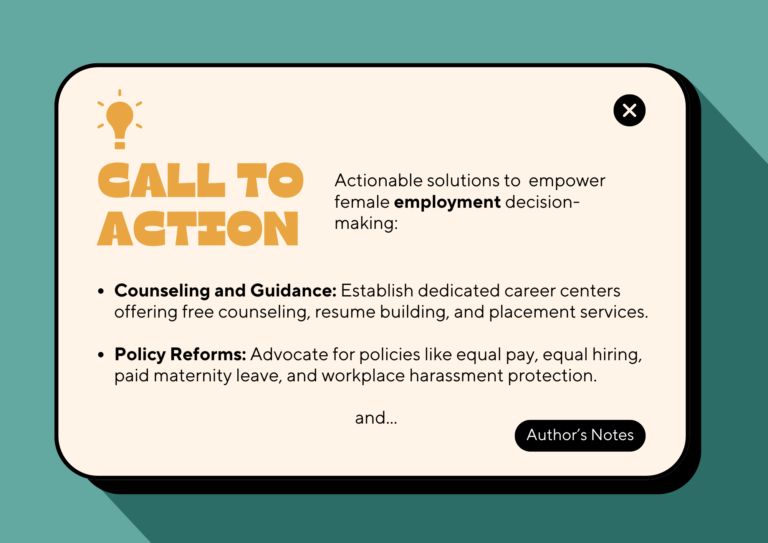
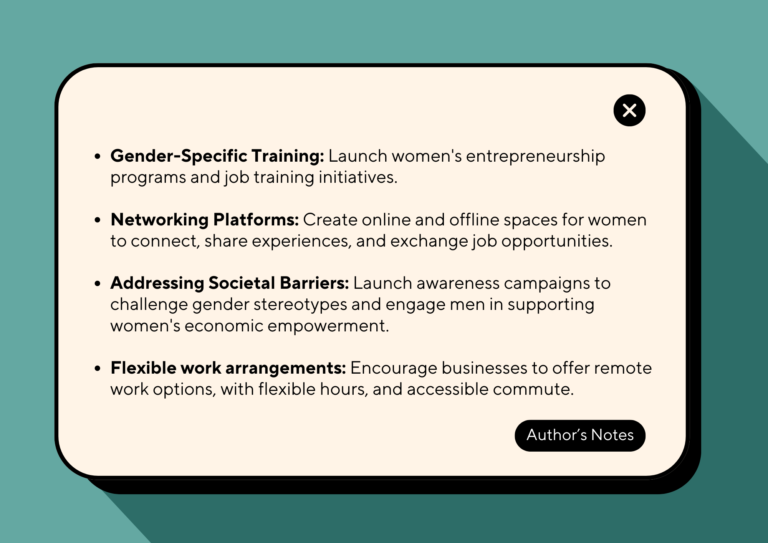
The insights gathered from this article can inform policies that promote gender equality and empower women
to take control of their employment and career paths.
The data source used in this analysis is the Gallup Pakistan PSLM 2018-19 Data Dashboard, which provides an unparalleled glimpse into the socio-economic trends shaping Pakistan today. For a deeper dive into the data and to uncover more insights, explore the dashboard here.
Author: Maha Gardezi
Reseach and Analytics Intern, Gallup Pakistan
